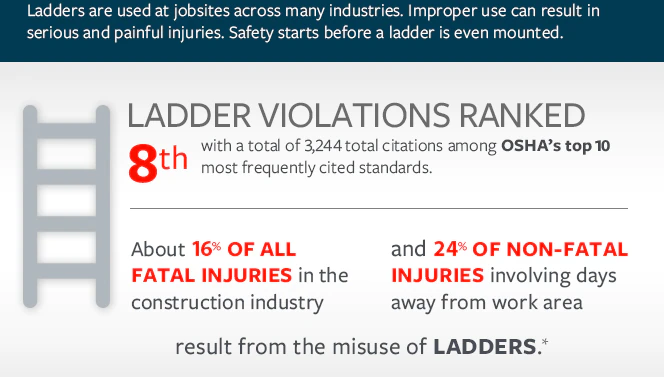Ladder Safety Tips

Ladder safety should start before even stepping foot on one. The improper use of a ladder, or using an object other than a ladder to reach an item, can result in serious injury due to over-reaching or falling. Statistics suggest that workers are more likely to abuse and misuse ladders than to use them correctly in the workplace.

There are a number of factors that must be considered when working with ladders, and following key practices of ladder safety can help prevent a potential injury.
- Inspect a ladder for cracks, loose rungs, slivers and sharp edges prior to every use. If the ladder appears to be in poor condition, do not use it.
- Use caution while carrying or moving ladders.
- Practice team lifting if the ladder is too long or heavy for one person to move.
- Ladders should be carried horizontally rather than vertically, unless it is lightweight or under eight feet tall.
- Ensure ladders are set on firm ground and against a solid support during use.
- When using a non-self-supporting ladder, which must lean against a wall or other support, be sure to position it at such an angle that the horizontal distance from the top support to the foot of the ladder is about one-fourth the working length of the ladder.
- Always completely open the step ladder and make certain it is stable before using it.
- Make note of the maximum intended load and manufacturer's rated capacity when selecting and using ladders.
- Do not stand higher than the second step from the top.
- Never stand or sit on the top step.
- Do not use metal ladders near electrical exposures.



